
PHYSICS OF ATOMIC NUCLEI
Scope & Guideline
Exploring the Core of Nuclear Physics
Introduction
Aims and Scopes
- Nuclear Structure and Dynamics:
Research on the structure of atomic nuclei, including the exploration of nuclear shells, shapes, and collective phenomena such as vibrations and rotations. - Nuclear Reactions:
Studies of various nuclear reactions, including elastic and inelastic scattering, fusion, fission, and decay processes, with a focus on understanding the mechanisms and outcomes of these interactions. - Particle Physics and High-Energy Collisions:
Investigations into the behavior of particles during high-energy collisions, including studies related to the production of heavy quarks, mesons, and baryons. - Astrophysical Applications:
Research that links nuclear physics to astrophysics, including nucleosynthesis processes, cosmic rays, and the role of nuclear reactions in stellar and cosmic phenomena. - Experimental Techniques and Instrumentation:
Development and application of advanced experimental techniques and instrumentation for nuclear physics research, encompassing detection methods, data acquisition systems, and analysis methodologies. - Theoretical Models and Simulations:
Utilization of theoretical frameworks and computational models to predict nuclear properties and reactions, including the application of quantum mechanics and statistical mechanics.
Trending and Emerging
- Quantum Computing and Machine Learning Applications:
The integration of quantum computing techniques and machine learning algorithms in nuclear physics research is on the rise, allowing for enhanced data analysis and modeling capabilities. - Nuclear Medicine and Radiopharmaceuticals:
Growing interest in the development of radiopharmaceuticals and their applications in medical imaging and therapy has emerged as a significant trend, reflecting the societal need for advanced diagnostic techniques. - Neutrino Physics and Oscillation Studies:
Research on neutrino properties and oscillations has gained momentum, particularly in relation to experimental setups that explore fundamental questions about particle interactions. - Nuclear Astrophysics:
The link between nuclear reactions and astrophysical phenomena, such as nucleosynthesis in stars and cosmic ray interactions, has become increasingly relevant, highlighting the interdisciplinary nature of modern nuclear research. - Advanced Detectors and Experimental Facilities:
The development of cutting-edge detection technologies and experimental facilities, such as those at large particle accelerators, is a prominent focus, enabling high-precision measurements in nuclear physics.
Declining or Waning
- Heavy Ion Physics:
Research specifically targeting heavy ion collisions and their implications has seen a decrease, possibly due to a shift towards more diverse experimental setups and broader applications in nuclear physics. - Classical Nuclear Models:
The reliance on classical nuclear models for describing nuclear interactions is waning, as newer quantum mechanical approaches gain popularity and provide more accurate predictions. - Low-Energy Nuclear Physics:
Research focused on low-energy nuclear reactions has decreased, with growing interest in high-energy processes and their connections to fundamental physics. - Theoretical Studies of Exotic Nuclei:
Interest in theoretical studies of exotic nuclei, while still present, has lessened compared to experimental investigations and practical applications in nuclear technology.
Similar Journals
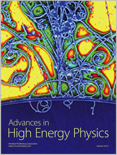
Advances in High Energy Physics
Pioneering Insights in the Realm of High Energy PhysicsAdvances in High Energy Physics, published by HINDAWI LTD, is a premier open-access journal dedicated to the progressive field of Nuclear and High Energy Physics. With an ISSN of 1687-7357 and an E-ISSN of 1687-7365, this journal has been at the forefront of scientific discourse in high energy physics since its inception in 2007. The journal is notable for its impact within the community, currently holding a Q2 ranking in 2023 and positioned at #36 out of 87 in its category according to Scopus, highlighting its significant contribution to ongoing research and advancement in the field. Its accessible nature enables researchers, professionals, and students to engage with cutting-edge findings that shape our understanding of the universe. Spanning publications from 2010 through 2024, Advances in High Energy Physics serves as an invaluable resource for those looking to stay informed about the latest developments and methodologies in high energy physics across the globe.
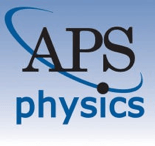
PHYSICAL REVIEW C
Charting New Territories in Nuclear UnderstandingPHYSICAL REVIEW C is an esteemed journal published by the American Physical Society, dedicated to advancing knowledge in the fields of nuclear and high-energy physics. With a proud ISSN of 2469-9985 and an E-ISSN of 2469-9993, it has established itself as a leading journal, currently ranked in the Q1 category for its field in 2023, positioning itself in the top tier of scholarly publications. Based in the heart of the United States, at One Physics Ellipse, College Park, MD, PHYSICAL REVIEW C is known for its rigorous peer-review process and is a vital platform for researchers to share their pioneering findings. As part of a prestigious lineup backed by an impressive impact factor, this journal garners significant attention, reflected in its Scopus ranking as #18 out of 87 in the Nuclear and High Energy Physics category, placing it within the 79th percentile. While it currently does not offer open access options, it remains an essential resource for professionals and students seeking to deepen their understanding of nuclear interactions, reaction dynamics, and the fundamental principles governing subatomic particles. The convergence of innovative research from 2016 to 2024 makes it a timely reservoir for groundbreaking studies, thus reinforcing its importance in the scientific community.

FEW-BODY SYSTEMS
Fostering Global Dialogue in Physics and OpticsFEW-BODY SYSTEMS is a distinguished journal published by Springer Wien, dedicated to advancing the field of Atomic and Molecular Physics and Optics. With an ISSN of 0177-7963 and an E-ISSN of 1432-5411, this scholarly periodical has been a vital resource since its inception in 1986, with a continued commitment to disseminating high-quality research up to 2024. Recognized in the Q2 quartile in its category and ranked 132 out of 224 in Scopus within the relevant fields, FEW-BODY SYSTEMS provides a platform for innovative studies that explore the complexities of few-body quantum systems, fostering discussions that enhance scientific understanding and technological advancement. Based in Vienna, Austria, this journal reflects a global scholarly community's engagement with pressing theoretical and experimental topics, contributing significantly to the ongoing discourse in physics and optics. Although it does not currently offer open access options, it remains a reputable choice for researchers, professionals, and students eager to delve into the intricate dynamics of few-body interactions.

Problems of Atomic Science and Technology
Exploring Innovations in Nuclear Technology.Problems of Atomic Science and Technology is a leading journal in the realm of nuclear physics and technology, published by the esteemed Kharkov Institute of Physics and Technology. With an ISSN of 1562-6016, this journal is dedicated to disseminating high-quality research and advancements in atomic sciences, contributing significantly to both academic and practical applications in the field. Although not an open access publication, it ensures rigorous peer review standards to maintain the integrity and relevance of cited works. The journal seeks to provide a vital platform for researchers, professionals, and students who are engaged in the exploration of atomic phenomena, nuclear engineering, and associated technologies. Published from Kharkov, Ukraine, the journal also serves as a bridge for international collaboration and innovation, making it indispensable for anyone looking to stay at the forefront of atomic science research.

PHYSICS OF PARTICLES AND NUCLEI
Exploring the Frontiers of Nuclear PhysicsPhysics of Particles and Nuclei is an esteemed journal within the field of nuclear and high energy physics, published by Pleiades Publishing Inc. Based in the United States, this journal has been a vital platform for disseminating cutting-edge research since its inception in 1996, with coverage extending until 2024. Indexed under the ISSN 1063-7796 and the E-ISSN 1531-8559, it has established itself as a noteworthy publication, currently categorized in the Q3 quartile according to the 2023 standards for Nuclear and High Energy Physics. With its Scopus ranking placing it at #62 out of 87 in its category, Physics of Particles and Nuclei provides unique insights and discussions that resonate with academics, researchers, and students alike. Although it does not offer open access, the journal continues to serve as a crucial resource for those looking to engage deeply with the latest advancements and theoretical explorations in particle and nuclear physics.
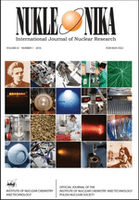
NUKLEONIKA
Unveiling the Mysteries of Matter and EnergyNUKLEONIKA, published by SCIENDO, is a leading open access journal that has been serving the scientific community since its establishment in 1968. Focused on the domains of Nuclear and High Energy Physics, Condensed Matter Physics, and Nuclear Energy and Engineering, this journal provides a platform for innovative research and technological advancements in a variety of interdisciplinary fields. With an impressive history of publications and a current Q3 ranking in several categories, including Safety, Risk, Reliability and Quality and Waste Management and Disposal, NUKLEONIKA is recognized for its significant contributions to scientific discourse. Open access since 2014, the journal ensures that all research outputs are freely available, facilitating broad dissemination and accessibility for researchers, professionals, and students alike. Located in the heart of Warsaw, Poland, NUKLEONIKA aims to inspire collaborative efforts and foster a deeper understanding of complex physical phenomena and their practical implications.
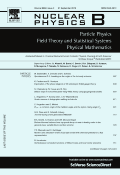
NUCLEAR PHYSICS B
Leading the Charge in Open Access Nuclear ResearchNUCLEAR PHYSICS B, published by Elsevier, stands at the forefront of research in the dynamic field of Nuclear and High Energy Physics. Established in 1967, this prestigious journal has developed a reputation for excellence, now positioned in the Q1 category according to its 2023 quartile rankings. With an impressive Scopus rank of #21 out of 87 in its category and a commendable 76th percentile, it serves as a vital resource for scholars investigating the underlying principles of nuclear interactions and particle physics. The journal transitioned to an Open Access model in 2014, ensuring that groundbreaking research is accessible to a global audience. Its commitment to quality and innovation makes NUCLEAR PHYSICS B an essential platform for researchers, professionals, and students aiming to stay at the cutting edge of discoveries in this expansive field, contributing to the scientific discourse for nearly six decades.

INTERNATIONAL JOURNAL OF MODERN PHYSICS A
Exploring the cosmos and the building blocks of matter.INTERNATIONAL JOURNAL OF MODERN PHYSICS A, published by WORLD SCIENTIFIC PUBL CO PTE LTD, stands as a pivotal platform in advancing the frontiers of research within the fields of Astronomy and Astrophysics, Atomic and Molecular Physics, and Nuclear and High Energy Physics. Established in 1989, this journal has systematically contributed to the scientific community, with a demonstrated impact as indicated by its Q2 category rankings across these critical disciplines in 2023. Researchers and professionals are encouraged to engage with its rigorous peer-reviewed content, fostering a deeper understanding of modern physics theories and experimental breakthroughs. Although the journal operates under a conventional access model, it remains a vital resource for those seeking to disseminate their findings and stay abreast of cutting-edge developments. With an emphasis on quality and breadth of research, the journal continues to attract submissions from leading physicists and scholars, enhancing its reputation as a key academic resource.

EUROPEAN PHYSICAL JOURNAL A
Advancing Nuclear Insights for a Global AudienceEUROPEAN PHYSICAL JOURNAL A (EPJ A), published by Springer, is a premier journal in the field of Nuclear and High Energy Physics, dedicated to fostering innovative research and scholarly communication within the scientific community. With an impressive impact factor that reflects its significant contribution to the discipline, EPJ A ranks in the Q1 category and boasts a Scopus rank of 24 out of 87, placing it in the 72nd percentile of its field for 2023. This journal, with its ISSN 1434-6001 and E-ISSN 1434-601X, embraces a commitment to open access, ensuring that cutting-edge research is accessible to a global audience. With coverage from 1998 to 2024, EPJ A continues to be a vital resource for researchers, professionals, and students alike, promoting collaboration, knowledge sharing, and advancements in the vast landscape of nuclear physics and high-energy interactions. Located in Germany with a representative address in New York City, this journal serves as a bridge for international scientific discourse.
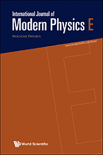
INTERNATIONAL JOURNAL OF MODERN PHYSICS E
Fostering Global Collaboration in Physics and AstronomyThe INTERNATIONAL JOURNAL OF MODERN PHYSICS E, published by WORLD SCIENTIFIC PUBL CO PTE LTD, serves as a distinctive platform for the dissemination of high-quality research in the fields of Nuclear and High Energy Physics, as well as Physics and Astronomy. With an ISSN of 0218-3013 and covering a timeline from 1996 to 2024, the journal has established itself within the academic community, achieving a respectable Q3 ranking in its respective categories for 2023, underscoring its commitment to advancing knowledge in modern physics. Although it operates without an open access model, the journal's curated content is accessible to a wide audience of researchers, professionals, and students engaged in cutting-edge physics. Set in Singapore, this journal not only contributes to scholarly discussions but also fosters a global collaboration among physicists, making it an invaluable resource for those seeking to deepen their understanding and contribute to ongoing dialogues in the scientific community.